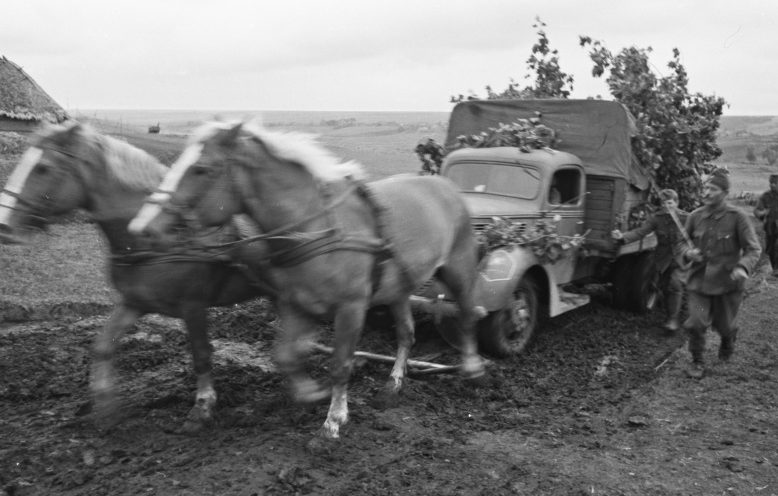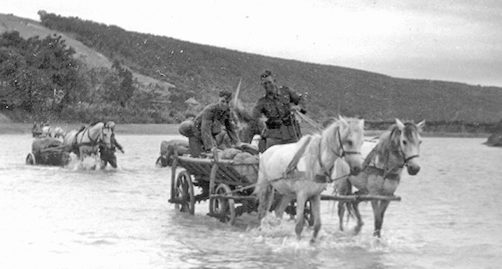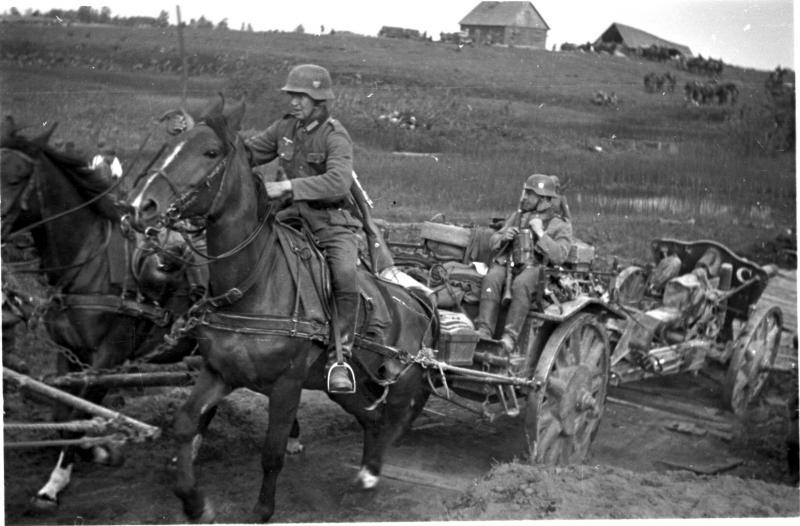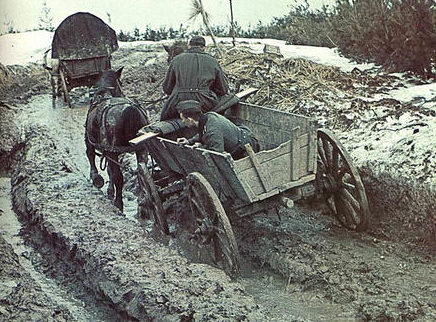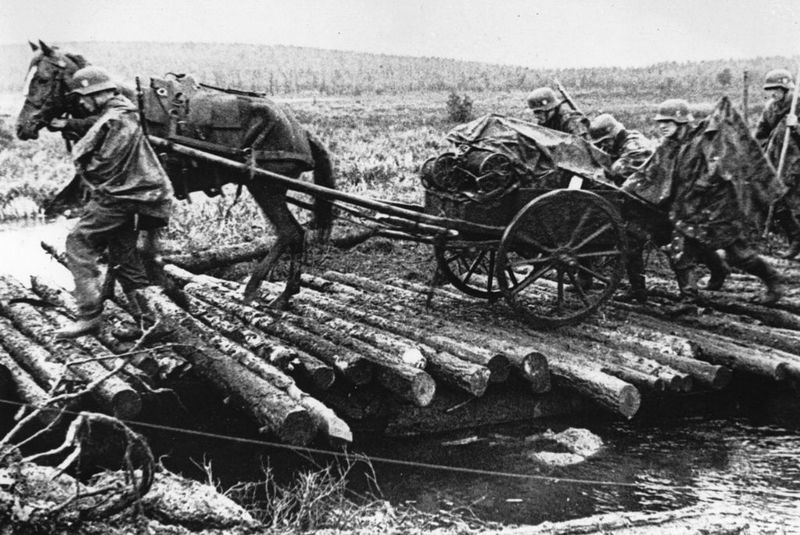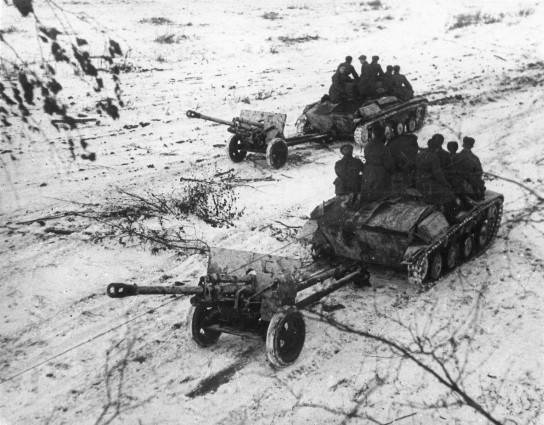HexCode wrote: ↑2021-04-10 01:07, Saturday
The Campaign feature lies at the heart of the 5 Star General play system paradigm. Aside from the past, empirically confirmed market appeal, the feature "simplifies" matters by utilizing a one-size-fits-all equipment type roster throughout a particular Campaign. To boot, geographical scale remains "indeterminate" as one moves from one scenario map onto the next one. As for OoB, well, we've already discussed this at length...

So, the first problem is to decide on the scale and not change it during the campaign. The solution is simple - the scale does not really need to be changed.
The principle of a 5-star campaign isn't all that bad. The second problem here is different. Let me explain using the example of the German army 1939-1945. The first part of the "game", 1939-1942 was played according to one principles of army organization, and 1943-1945 - according to different principles. From a game point of view, it was very attractive to give the player the opportunity to go through the entire war of 1939-1945 without restructuring the army.
I am not making a commercial product. From my point of view, there should be two campaigns here: 1939 - July 1943 and August 1943-1945.
Yes, simple and tough - if the player could not take Moscow 41, or Stalingrad + Baku, or Kursk, Game is over.
Since the days of PG, the player has been given a huge number of hidden bonuses in the game, which the player did not see directly, but which greatly influenced the result. And the result is the Washington scenario. Wow!
Hidden bonuses included:
- too tank accessible terrain. That is, clearly incomplete maps that did not prevent tanks from rolling around the map anywhere.
- too high combat parameters of some especially important tanks. The tank as a universal means of breaking through a deeply echeloned defense ... tell the Model about Kursk about this.
- too high parameters of mobility of tanks
- the underestimated cost of many units, which are very difficult to develop, manufacture and operate.
- inflated PP bonuses for victory and for the destruction of enemy units.
Serious conversation about all of these things in relation to OoB has not yet begun. There were only some sketches of ideas and notes

.
HexCode wrote: ↑2021-04-10 01:07, Saturday
Interestingly enough, the very same critique has been leveled at the aforesaid play system paradigm for an entirely different reason. Namely, high quality H2H play was conceived as Standalone Scenario play where each such scenario would be chock-full of particularities. Technically, each such scenario would be a wargame in and by itself. The conceptual connection with traditional tabletop board wargames should be rather obvious.

I'm all for it"! The creation of a Campaign does not interfere with the creation of separate scenarios for the H2H mode. We have already talked about this in relation to the Low Countries scenario. Of all the scenarios I have worked with, this scenario is the only one promising for the H2H game. The only scenario where I still don't understand who should have won if played correctly ...
HexCode wrote: ↑2021-04-10 01:07, Saturday So, whether we're talking historical fidelity or high quality H2H play, the Campaign feature kind of falls short on both counts.
I will express my preliminary thoughts on the "Campaign", which can be both historical and very interesting and difficult for the player at the same time.
1) Very limited amount of P.
2) Highly increased Player's units cost comparing with enemy units cost. In such case it makes extremely important for Player not to loss any own unit. Otherwise enemy will gain too much very useful Prestige.
3) There are no automatic replacements between scenarios.
4) EXP Cap in some scenarios.
5) All maps in one scale.
6) And, quite a heretical thought. Scenarios in which the Player must inevitably lose some of his elite units.
About the last point 6.
We took Moscow41 and went to London (MAJ) or Sevastopol (MIN)? And if, in any case, a counterattack of Soviet troops follows, of DIFFERENT strength depending on MAJ or MIN, which the player must stop with the available units without automatic reinforcements between scenarios, and only then, in the event of a successful defensive battle in January-February 1942, will there be Sevastopol?
Or Kursk. First, there will be an offensive scenario for 10 move-days. And also, depending on the victory won, the subsequent scenario will be a counter-strike of the Soviet armies from the flanks. In this case, the player's VH will be not just conquered Kursk, but, say, Kiev and more. Deployment hexes will be located near Kursk and near Warsaw. And let the player choose the strategy for the further war:
- Leave Kursk and retain only Kiev. Then the next scenario will be defensive and will not lead to any global victory.
- try to keep some other VH besides Kiev. This allows the next scenario to be offensive ... but what is the player going to be offensive with? This is already a difficult game task.
At least from the above, it is clear that we have the means for NON-LINEAR development of the campaign tree.
So far, we have played LINEAR campaigns, where even in defensive scenarios, the player's army was so much stronger than the attacking army that I often wondered - why did they even decide to attack superior forces?
 About one Scenario-trick from SSI.
About one Scenario-trick from SSI.
Have you ever wondered why SSI included three strange scenarios in the 1939 Campaign: Norway, Crete and Sevastopol?
SSI very elegantly solved one big problem they faced - historicity. The historicity is not of military operational and tactical movements, but of a completely different kind: economic and military training.
Norway is an opportunity for the player to carry out a quality upgrade of his army. In reality, from October 1939 to May 1940, the German army was modernized and reorganized. But how to give such an opportunity to the Player if he is transferred from Poland directly to France?
Crete - while the player conquers the ancient Minoan island, his task is completely different - upgrade and preparation for Barbarossa.
Sevastopol is a hidden emulation of the rearmament process of the German army after the catastrophe of December 1941.
These three scenarios are stub scenarios.
Taking a more historical approach to these scenarios, the player's army shouldn't have appeared on the battlefield at all. Or show up in a remote Supply Center without affecting anything. The fighting was to be conducted by AUX units. And the player had to spend the obtained starting prestige calmly and unhurriedly on the upgrade.
HexCode wrote: ↑2021-04-10 01:07, SaturdayPractically speaking, given your professed interests, you may consider shying away from designing Campaigns and focusing on particular "battles", ... particularities and all.

Both. And as much as possible. But with one good principle in mind:
Aut non tentaris aut perfice 

